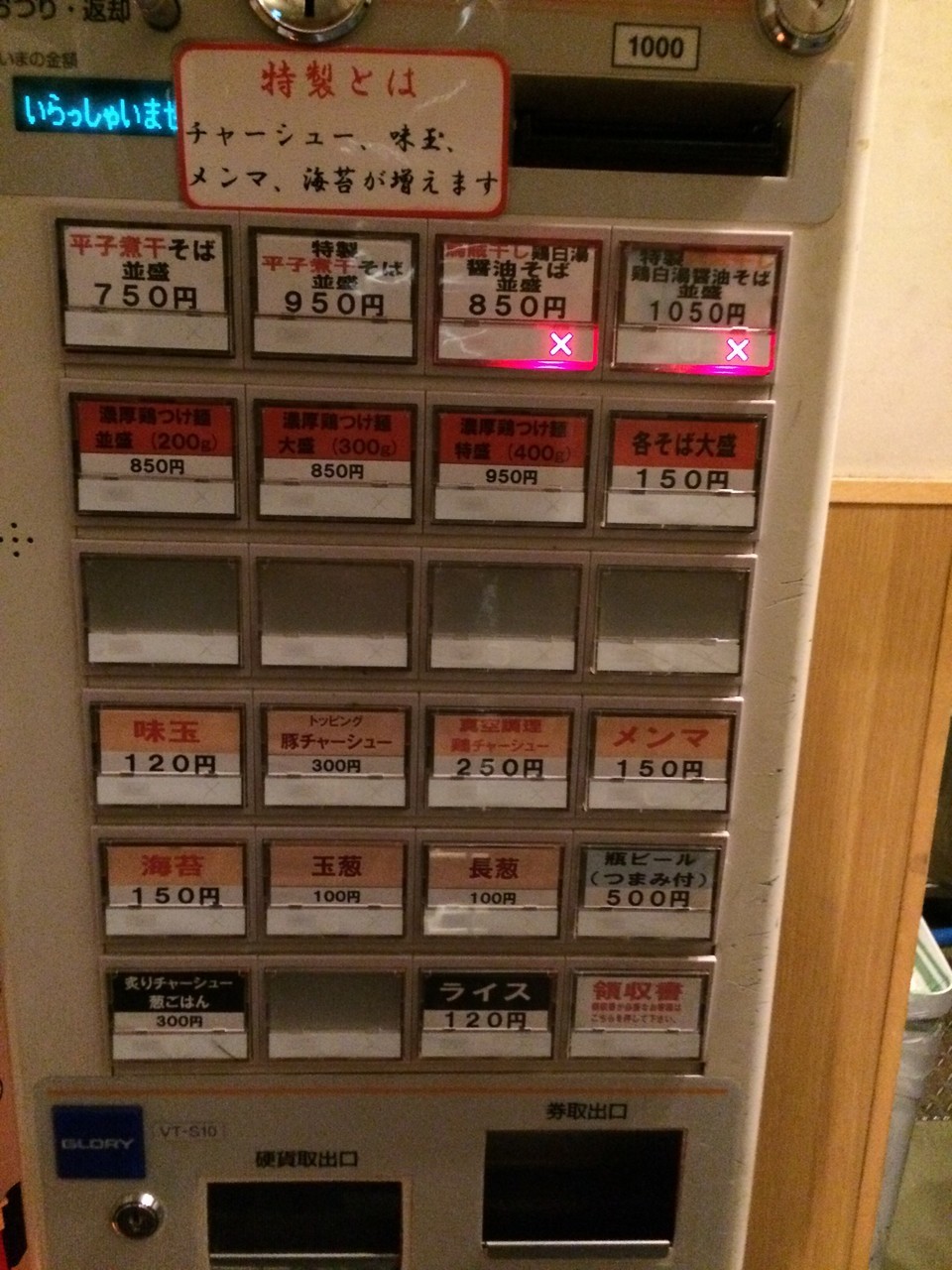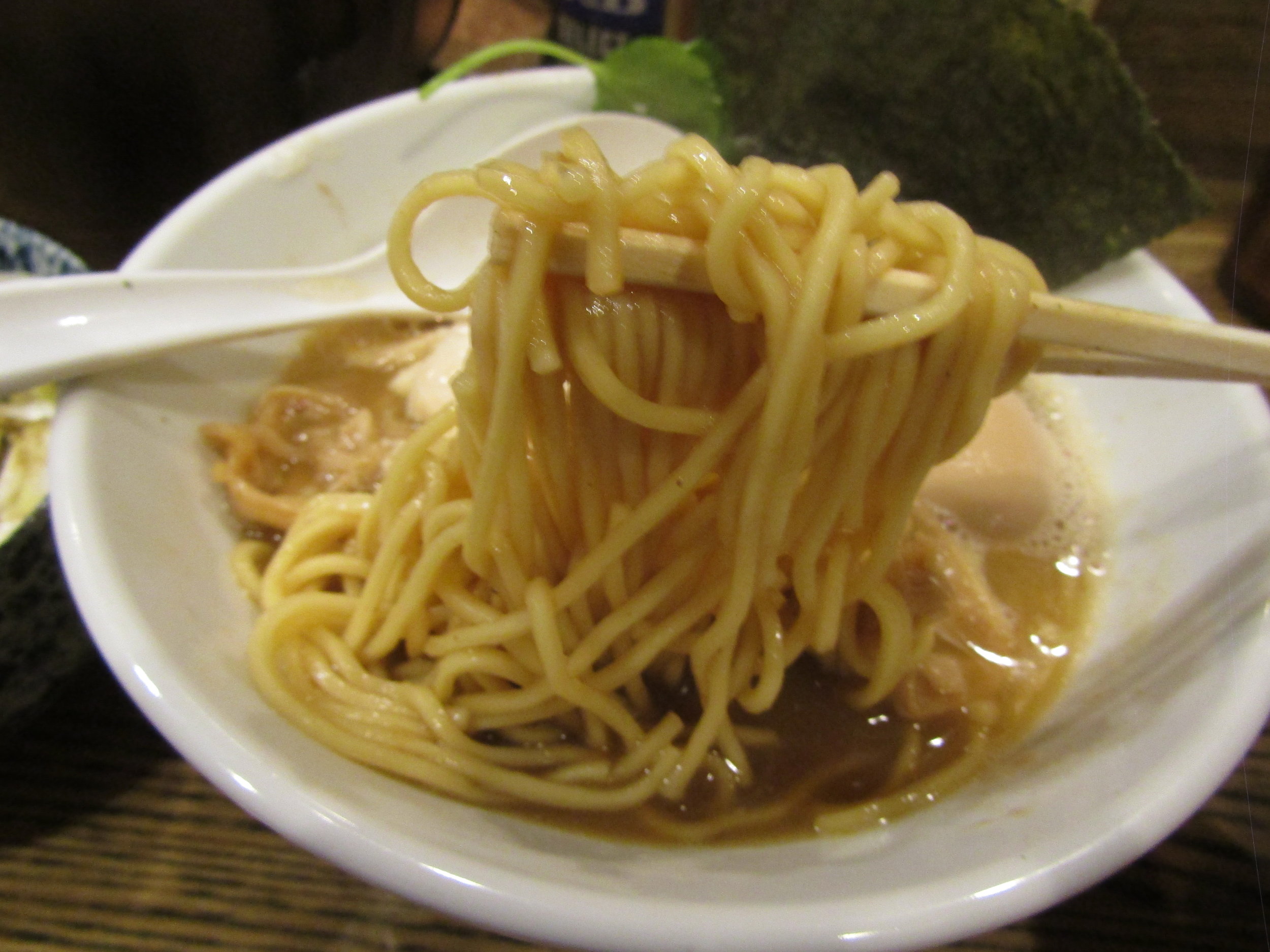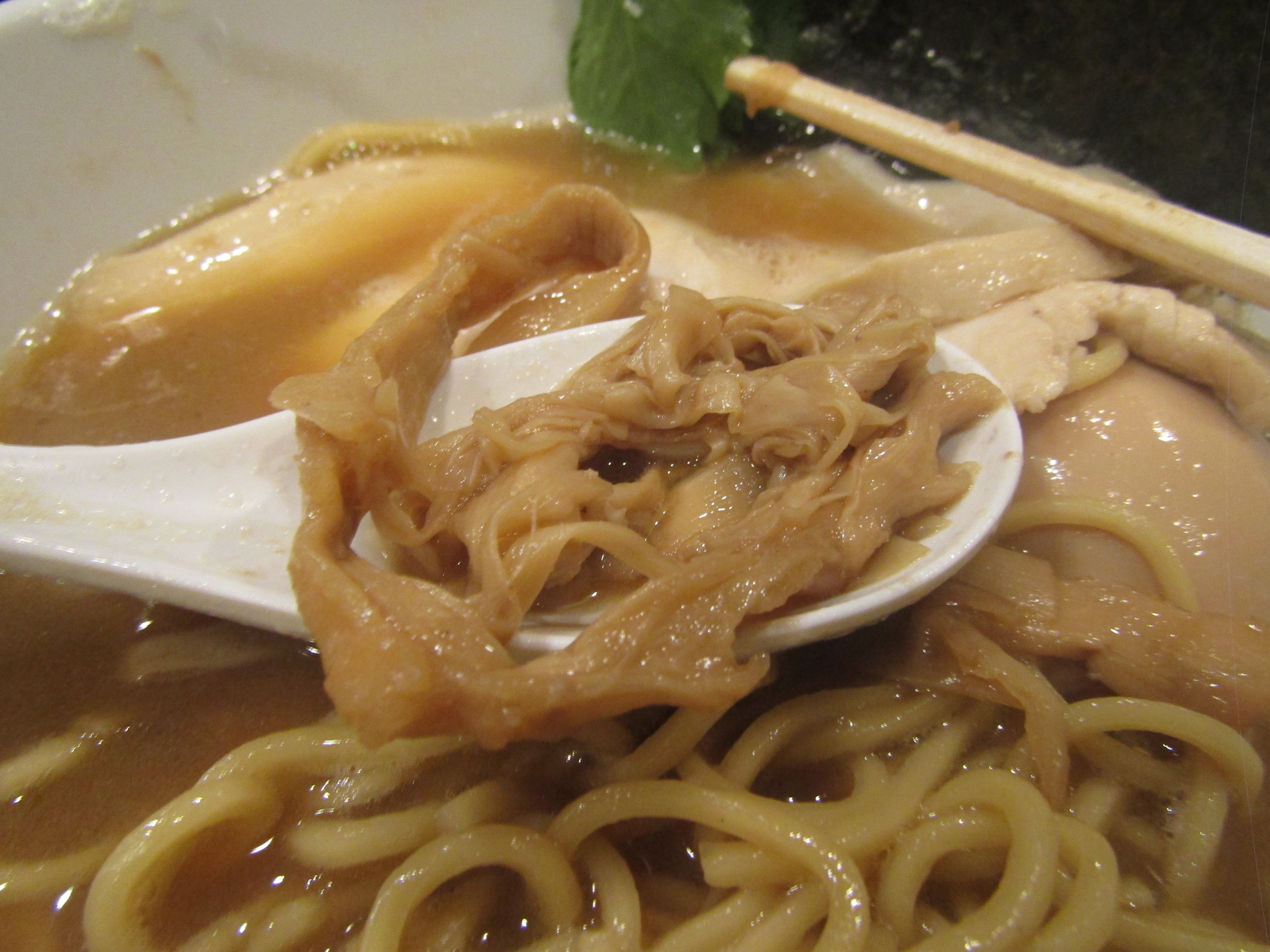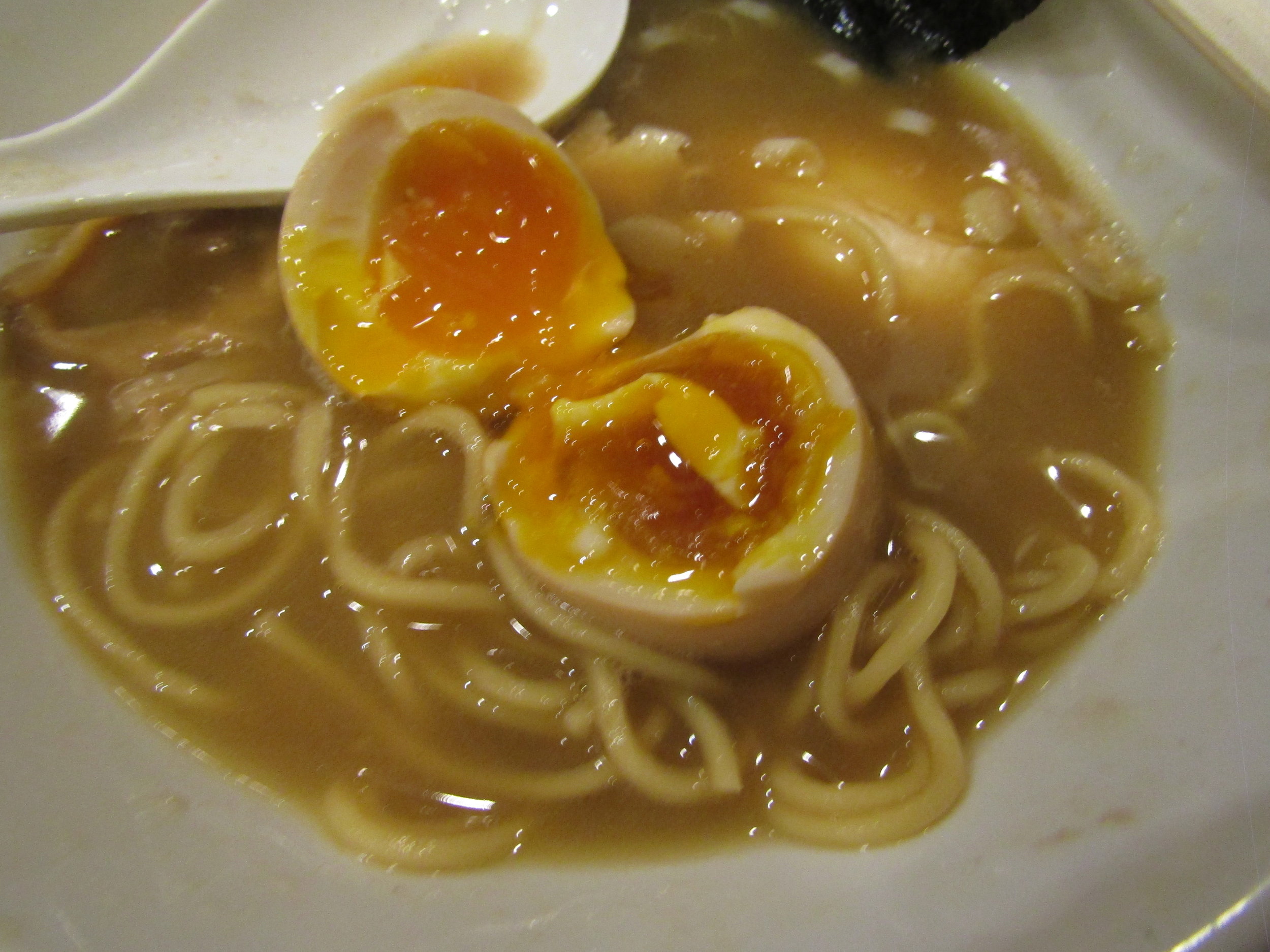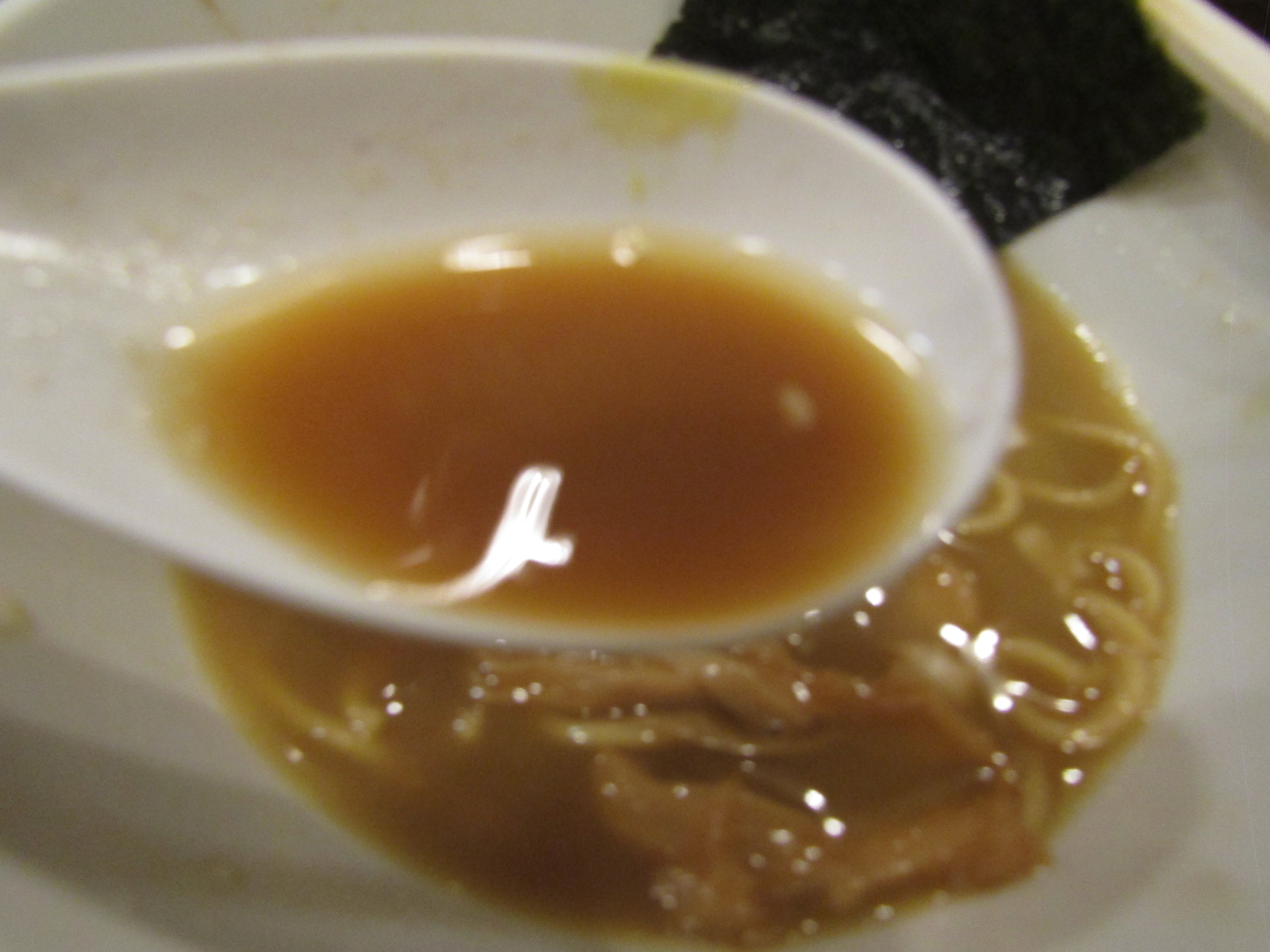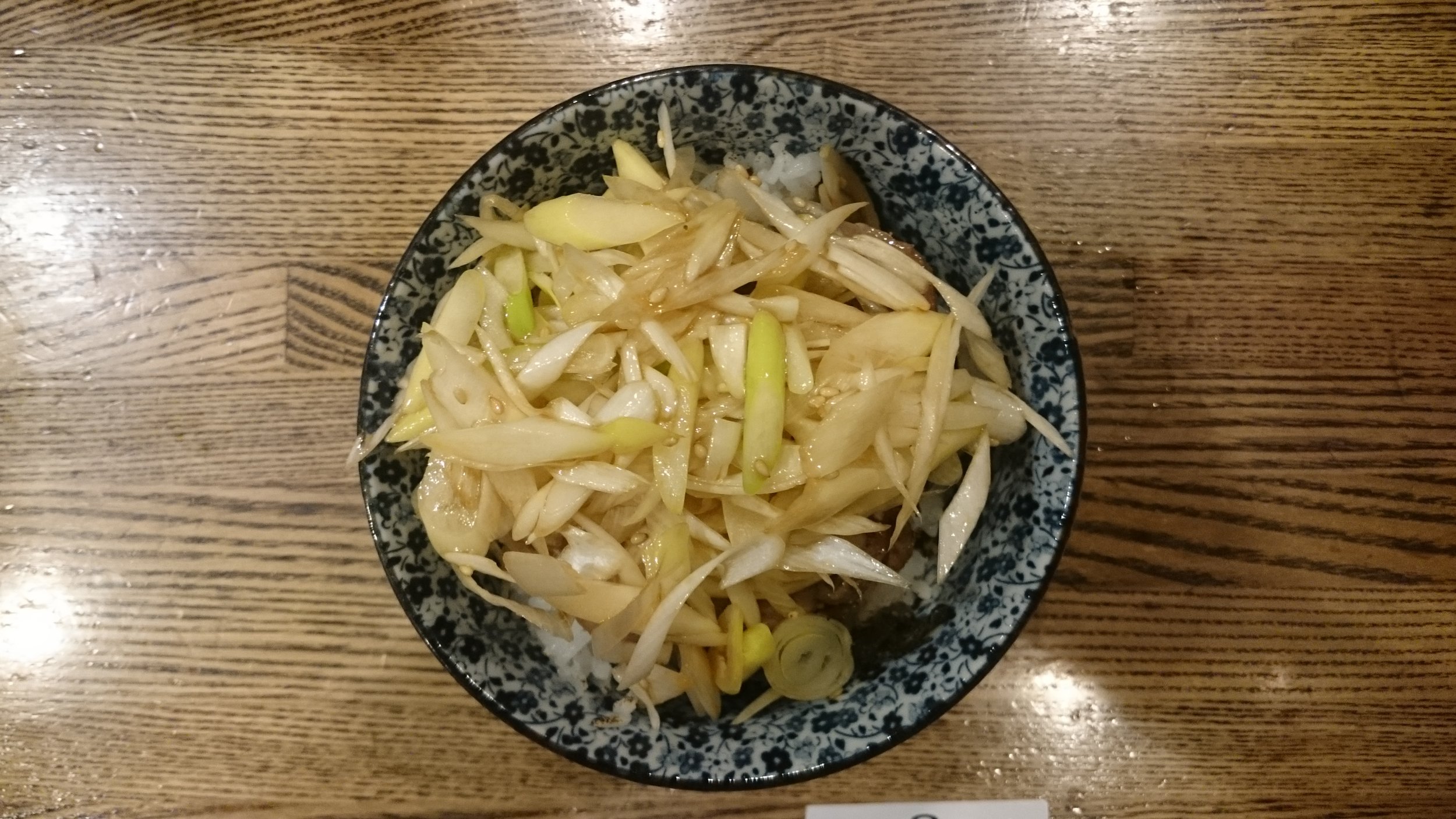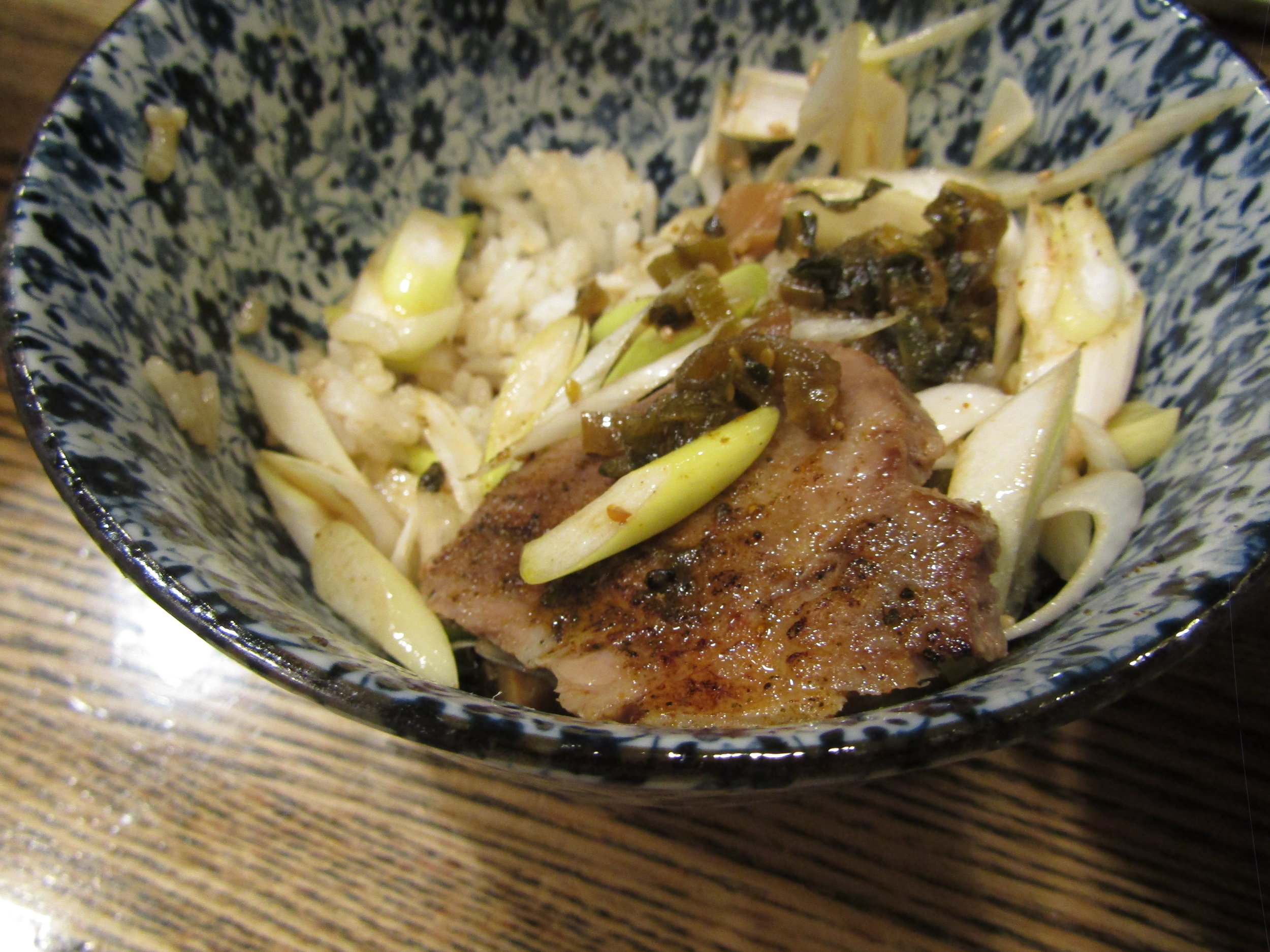Shinbashi Matoi (新橋 纏), Squid Ramen..., Shinbashi
The picture you see above is not a mistake. Shinbashi Matoi is located INSIDE the small alleyway in between the yakitori restaurant to the right and the construction of a large office building on the left. They have been forced to put up their shop banner on the walls of the construction due to a lack of space, but you’re not lost if you find yourself with this view as I thought I was. What’s hidden through this secretive alley however, is one of the more unique ramen bowls you’ll find in Tokyo. Shinbashi Matoi is a popular spot for the thousands of salarymen working in the area so you’ll want to arrive before or after the lunch rush, but once you do, you’ll have a bowl you likely won’t forget for a while.
Much like a lot of Tokyo ramen restaurants, Shinbashi Matoi has both lunch and dinner hours with a couple hours break in between. Monday to Friday Matoi is open from 11:00-15:00 for lunch and 17:30-22:00 for dinner. On Saturday the hours are 11:00-15:00 for lunch and 17:30-21:00 for dinner. Sundays are 11:00-15:00 for lunch and 17:30-20:00 for dinner. Best bet is to come at 17:30 for dinner on weekdays or early at 11:00 for lunch on weekends. Lunch hours during the week is quite busy as salarymen from nearby office buildings will frequent the establishment, but tend to be few and far between for dinners. As you can see from the photo, the menu at Matoi is quite simple. On the top is the Hirako Niboshi Soba (dried fish broth), Tokusei Hirako Niboshi Soba (with extra toppings), Ika Niboshi Toripaitan Shoyu Soba (squid, dried fish, and chicken paitan ramen), and the Tokusei Ika Niboshi Toripaitan Shoyu Soba (extra toppings). On the second row are the Noukou Tori Tsukemen ranging from 200, 300, and 400 grams of noodles. The last button on the right is for extra noodles on any of the bowls from the top row. The fourth row are the toppings of Ajitama (seasoned egg), Pork Char Siu, Chicken Char Siu, and Menma bamboo shoots. The row below that features seaweed, diced onions, green onions, and beer with appetizers. Finally the final row is the Char Siu over rice and plain rice. I visited Matoi with a friend who decided on the Tsukemen, so I opted for the Ika Niboshi Toripaitan and a side of Char Siu over rice.
Immediately upon receiving my bowl of the tokusei squid, niboshi toripaitan I’m greeted by that familiar squid smell. The use of squid is quite prominent here and gives it a unique creaminess to the bowl. Accentuating the theme of the dish is a few legs of the squid in addition to my three slices each of the roast pork and chicken char siu. Slivers of soft menma, marinated soft boiled egg, dried seaweed, and mitsuba (Japanese herb) round out the toppings for my ramen. The soup itself is reminiscent of a chowder; a deep seafood flavor in addition to the overall creamy density of it. Initially you’re hit with the a strong squid flavor, but is immediately followed by the umami burst from the niboshi. As it is a toripaitan, you get the fatty and oily notes from the chicken broth, but make no mistake, this is a squid broth ramen. I will admit though, it got a bit of getting used to as I’m not accustomed to having such a unique broth to my ramen, but I couldn’t stop drinking the soup once I began. It’s a bit addicting in the sense that while delicious, you can’t quite pinpoint one distinct flavor. Due to the intense cooking process of the broth, the aroma is a bit…smelly to say the least. You can’t help but fill your nostrils with the distinct squid smell, but it was too delicious for me to care. As a precaution though, I don’t think I can recommend this bowl to anyone with a dislike for cuttlefish, but if you do, this is perfection.
The pork and chicken char siu are both likely sous vide with a bit of a char on the pork. It’s not particularly strong in flavor, but it really doesn’t have to be. It soaks up a lot of the soup flavors and I doubt a strongly flavored char siu would work with this ramen. Not like this is a delicate soup, but it definitely has such a unique flavor that traditional char siu marinades wouldn’t pair with the soup. The squid legs look like they were part of the broth at some point. The colors are fading and the outer layer melts off, but honestly this is a sign of tender squid legs which I appreciated. Nothing worse than having a rubbery squid leg that’s difficult to chew through. Overall the protein toppings were made to perfectly compliment the soup. It maintains a supporting role in the bowl and lets the soup be the main attraction.
The noodles are quite nice, pretty high in alkaline and thin, but chewy. It doesn’t take in a lot of moisture, which is nice as it maintains its flavor and doesn’t lose out to the strong seafood soup flavor. It works well to do what needs to be done, act as a catalyst for more soup to come in to your mouth. Nothing particularly fantastic, just a job well done. The menma bamboo shoots were quite interesting. It’s rather soft and stringy, unlike a lot of the thick meaty bamboo shoots other Tokyo ramen restaurants use. I actually enjoyed this quite a lot as it has a stark difference from what I’m used to and has a nice fermented flavor that works with this seafood broth. Egg is a perfectly cooked soft boil with a soy sauce based tare marinade. The creamy, richness of the yolk actually mellows the flavors of the soup here and was a nice change in flavor mid bowl.
Next up was my char siu over rice bowl. I was quite surprised at my char siu rice bowl after having my bowl of ramen. Typically the char siu bowl is a similar cut and/or flavor profile as the ones thy use for the ramen. However, at Matoi it was a completely different pork belly cut which was marinated and charred before being thinly sliced and served over rice with a generous amount of cross cut leek seasoned in sesame seed and sesame seed oil piled on top. The pork was nice and tender with the leek giving a nice crunch to the bowl. The salty, savoriness of the pork and marinated leek combo made it a perfect pairing for the white rice. If you’re a big eater, I’d recommend supplementing your meal with a side order of the char siu rice bowl for sure.
Luckily for me I came with a generous friend who ordered the medium sized tsukemen so that I could have some of his bowl and make a review for you. Now the tsukemen here is a completely different dish using a chicken and niboshi soup rather than the trio with the squid. The condensed soup hit all the savory and salty notes you’d want in a tsukemen without being thick like a Itto or Tomita. Noodles are high in alkaline and thinner than most typical tsukemen. It almost felt like I was eating undercooked Chukasoba noodles rather than one for a tsukemen. I have to admit, while it is Noukou, or thick, it was actually lighter than what I was used to for tsukemen so it was really refreshing. Obviously this is likely just my own personal opinion based on the sheer amount of thick tsukemen I eat, but it is on the lighter end. The bowl is no frills, with just a bit of char siu hidden in the soup with the sprinkled bits of chopped leek as topping. I can’t say its the best thing on the menu, but I can see how regulars would change it up with an order of tsukemen when they get tired of the squid broth.
Overall I wouldn’t call Matoi a “must visit” restaurant in Tokyo. It’s fame and popularity is rooted in the thousands of salarymen who enjoy their lunch time ramen here rather than the hardcore ramen enthusiasts and fanatics. I will admit though that this is one of the most unique experiences starting with the obscure shop location and ending with then last spoonful of their special squid trio broth. If you do end up making your way to Matoi, be sure to let me know what you thought on my social media platforms or in the comment section below. Would love to hear different opinions on the restaurant!

